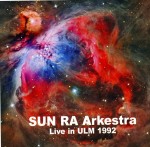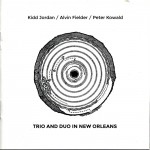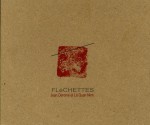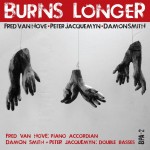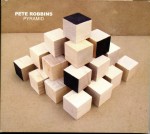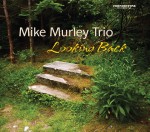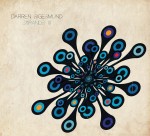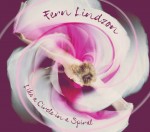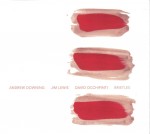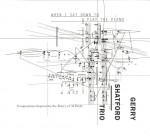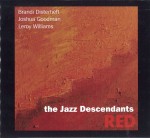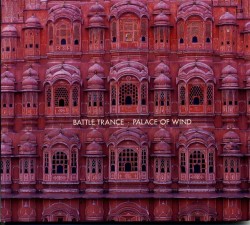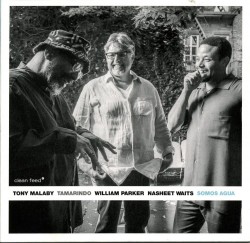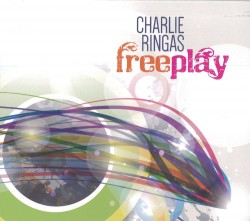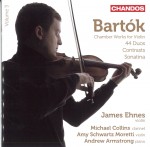 After two volumes of works for violin and piano James Ehnes reaches Volume 3 in his series of Béla Bartók’s Chamber Works for Violin with a CD featuring clarinetist Michael Collins, pianist Andrew Armstrong and violinist Amy Schwartz Moretti (Chandos CHAN 10820). Collins and Armstrong join Ehnes in an excellent performance of Contrasts, the work Bartók wrote for himself, Joseph Szigeti and Benny Goodman in 1938, and Armstrong accompanies Ehnes in the very brief Sonatina, a piano piece from 1915 heard here in a 1925 transcription (approved by Bartók) by André Gertler.
After two volumes of works for violin and piano James Ehnes reaches Volume 3 in his series of Béla Bartók’s Chamber Works for Violin with a CD featuring clarinetist Michael Collins, pianist Andrew Armstrong and violinist Amy Schwartz Moretti (Chandos CHAN 10820). Collins and Armstrong join Ehnes in an excellent performance of Contrasts, the work Bartók wrote for himself, Joseph Szigeti and Benny Goodman in 1938, and Armstrong accompanies Ehnes in the very brief Sonatina, a piano piece from 1915 heard here in a 1925 transcription (approved by Bartók) by André Gertler.
The bulk of the CD, though, is devoted to the 44 Duos for Two Violins from 1931. Bartók had been asked to transcribe some of his short piano pieces from 1908-09, For Children, a collection that had been based in part on some of the folk music he had collected before the First World War. He chose instead to write four books of duets drawing almost exclusively from a wider range of the folk traditions he had encountered at that time. They’re very brief – 28 of them last less than a minute – but anyone who has played them knows that their brevity doesn’t in any way indicate an absence of interest, mood change, variation or depth of invention.
They’re not difficult to play for the most part, although the technical level certainly does rise the deeper into the set you go, so it’s not so much a case of judging the performances here but more one of simply enjoying them. And with Ehnes and Moretti you’re in terrific hands.
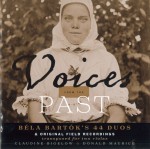 By pure coincidence, the batch of CDs that included the Ehnes Bartók also included violists Claudine Bigelow and Donald Maurice in Voices from the Past (Tantara TCD0213VFP), a wonderful 2CD set of transcriptions of the 44 Duos for two violas, but with a startling – and quite strikingly emotional – addition: 32 of the original field recordings made by Bartók that supplied the impetus and the basic material for most of the duos, heard here for the first time together on one album.
By pure coincidence, the batch of CDs that included the Ehnes Bartók also included violists Claudine Bigelow and Donald Maurice in Voices from the Past (Tantara TCD0213VFP), a wonderful 2CD set of transcriptions of the 44 Duos for two violas, but with a startling – and quite strikingly emotional – addition: 32 of the original field recordings made by Bartók that supplied the impetus and the basic material for most of the duos, heard here for the first time together on one album.
The first CD has a performance of the 44 Duos with the appropriate field recording preceding the corresponding Bartók duo; the words of the songs, the names of the singers or players, the locations and dates are all included in the excellent booklet notes. The second CD is an uninterrupted performance of the Duos.
Obviously, the sound quality of the field recordings, made on wax cylinders between 1904 and 1916, is understandably quite poor, and no restoration has been attempted here. Some of the recordings are very rough – almost inaudible in places – but the emotional impact of this singing and playing of ordinary people from 100 years or more ago paired with the music they inspired is enormous and not only sheds fascinating light on the nuances of Bartók’s writing but also imparts a sense of nostalgia to the pieces that is heightened by the darker tone of the two violas.
Bigelow and Maurice wisely chose not to use the William Primrose transcription of the work – the only one commercially available, but full of crucial changes Primrose made in an attempt to keep the duos at original pitch – and opted instead to simply transpose the entire set of duos down a fifth, thus retaining their integrity. Some brightness is lost as a result – in The Bagpipe and the final Transylvanian Dance, for instance – but the gain in warmth and depth more than compensates for this.
Listen to the girls collapsing in laughter at the end of their bright, up-tempo song, and then listen to Bartók’s slow, melancholy Prelude & Canon transcription that follows it, simply aching with longing for a rapidly vanishing past. It will forever change the way you hear these remarkable pieces.
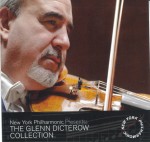 Glenn Dicterow has just stepped down after 34 years as concertmaster of the New York Philharmonic, and to mark the event and honour his service the organization has issued The Glenn Dicterow Collection (NYP 20140201), a three-volume selection of Dicterow’s live solo performances with the orchestra between 1982 and 2012. Volume 1 is available as a CD and download; volumes 2 and 3 are available only as downloads from nyphil.org/DicterowCollection.
Glenn Dicterow has just stepped down after 34 years as concertmaster of the New York Philharmonic, and to mark the event and honour his service the organization has issued The Glenn Dicterow Collection (NYP 20140201), a three-volume selection of Dicterow’s live solo performances with the orchestra between 1982 and 2012. Volume 1 is available as a CD and download; volumes 2 and 3 are available only as downloads from nyphil.org/DicterowCollection.
A beautiful 88-page souvenir booklet comes with the CD, which features superb performances of the Bruch G Minor Concerto, the Bartók Concerto No.1, the Korngold Concerto and the Theme from Schindler’s List, Dicterow getting inside these works quite wonderfully in really outstanding recordings.
Although he started his professional career as a violinist, Paul Hindemith developed an international reputation as a superb viola player from his early 20s. As a composer, the smaller repertoire for the viola no doubt presented an intriguing opportunity for him and he made significant efforts to enlarge it, writing five major works before he turned 30.
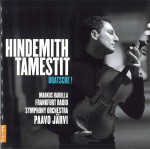 The outstanding French violist Antoine Tamestit has marked the 50th anniversary of Hindemith’s death last December with Bratsche!, a CD featuring four of the composer’s works for the instrument, (naïve V 5329). Pianist Markus Hadulla is the accompanist for the Sonata Op.11 No.4 from 1919, the earliest of Hindemith’s viola sonatas. The work has a beautiful opening, with a simply lovely melody that sounds tailor-made for Tamestit’s trademark deep, rich tone. There’s a lovely piano presence here as well, with great balance and superb recorded sound quality.
The outstanding French violist Antoine Tamestit has marked the 50th anniversary of Hindemith’s death last December with Bratsche!, a CD featuring four of the composer’s works for the instrument, (naïve V 5329). Pianist Markus Hadulla is the accompanist for the Sonata Op.11 No.4 from 1919, the earliest of Hindemith’s viola sonatas. The work has a beautiful opening, with a simply lovely melody that sounds tailor-made for Tamestit’s trademark deep, rich tone. There’s a lovely piano presence here as well, with great balance and superb recorded sound quality.
The Sonata Op.25 No.1 for Solo Viola is a relatively short work from 1922, but one which explores the full range of the instrument’s potential. Tamestit’s masterly technique and musical sensitivity are again fully evident.
Hindemith wrote Der Schwanendreher, a concerto for viola and small orchestra, in 1935, and based each movement on a medieval German folk song; the title comes from the song used in the final movement. Interestingly, the string section of the orchestra consists of cellos and basses only, the absence of violins and violas allowing the solo instrument to assume more prominence. The Frankurt Radio Symphony Orchestra under Paavo Järvi joins Tamestit in another terrific performance.
In January 1936 Hindemith travelled to London for a performance of the concerto, but the unexpected death of King George V resulted in the concert being cancelled at two days’ notice. The BBC asked Hindemith to write something suitable that could be broadcast in its place, and provided him with an office for the day; Trauermusik (Mourning Music) for viola and string orchestra was composed in a matter of hours, and performed and broadcast the same evening. The four movements last a little under 8 minutes, but it’s a quite beautiful piece which provides a beautiful ending to an outstanding CD.
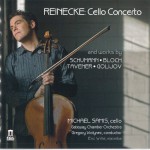 The American cellist Michael Samis makes his CD debut with Reinecke: Cello Concerto (Delos DE 3446), a disc that highlights a long-forgotten concerto by the German Romantic composer Carl Reinecke and also includes works by Sir John Tavener, Robert Schumann, Ernest Bloch and Osvaldo Golijov. The Reinecke concerto was written in 1864, and is a lovely, immediately accessible work clearly influenced by Reinecke’s teacher, Felix Mendelssohn. Samis has the necessary big, warm tone, and there is some lovely orchestral support from the Gateway Chamber Orchestra under Gregory Wolynec. Samis considers the work to be “a lost gem that richly deserves a place in the repertoire,” and it’s hard not to agree with him.
The American cellist Michael Samis makes his CD debut with Reinecke: Cello Concerto (Delos DE 3446), a disc that highlights a long-forgotten concerto by the German Romantic composer Carl Reinecke and also includes works by Sir John Tavener, Robert Schumann, Ernest Bloch and Osvaldo Golijov. The Reinecke concerto was written in 1864, and is a lovely, immediately accessible work clearly influenced by Reinecke’s teacher, Felix Mendelssohn. Samis has the necessary big, warm tone, and there is some lovely orchestral support from the Gateway Chamber Orchestra under Gregory Wolynec. Samis considers the work to be “a lost gem that richly deserves a place in the repertoire,” and it’s hard not to agree with him.
Schumann was another of Reinecke’s teachers, and his Adagio and Allegro Op.70 is heard here in an orchestral transcription by the Swiss conductor Ernest Ansermet. Originally written for horn and piano and later arranged by the composer for cello and piano, it’s a lovely, if somewhat inconsequential, piece.
Bloch was nearing the end of his life when he wrote three unaccompanied cello suites in the mid-1950s; the four-movement Suite No.1, which was dedicated to the Canadian cellist Zara Nelsova and is described in the excellent booklet notes as the best known and most accessible of the three, is included here. Samis gets to the heart of Tavener’s Threnos, a short solo piece written in memory of a close friend in 1990. Percussionist Eric Willie joins Samis for the final track, Golijov’s 1999 Mariel, for cello and marimba; it’s another work inspired by the sudden death of a friend.
Samis’ playing throughout is of the highest order, and there is depth, resonance and excellent balance in the recorded sound.
There’s something wonderfully wild and abandoned about true gypsy violin playing – its virtuosity, its pulsating and wildly fluctuating rhythms and tempos, mixed with the almost cluttered background accompaniment of cimbalom, accordion, clarinet and strings, make for an almost-out-of-control feeling of pure spontaneity.
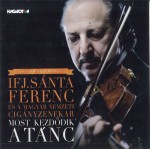 For the real thing, you need look no further than Here Comes the Dance, a Hungarian release featuring the multiple award-winning Santa Ferenc Jr. (Hungaroton HCD 10337). Ferenc has been playing this music for 45 years, and is currently the artistic director and leading violinist of the Hungarian National Gypsy Orchestra.
For the real thing, you need look no further than Here Comes the Dance, a Hungarian release featuring the multiple award-winning Santa Ferenc Jr. (Hungaroton HCD 10337). Ferenc has been playing this music for 45 years, and is currently the artistic director and leading violinist of the Hungarian National Gypsy Orchestra.
It simply doesn’t get any more authentic, or any better, than this, and there is some simply terrific fiddling here. There’s a great mix of numbers, including a dazzling Czárdás by Monti, and the CD ends with Dinicu’s Pacsirta, a classic gypsy fiddle piece. The whole CD is irresistible, and an absolute blast from beginning to end.
The Brazilian Guitar Quintet has been around for 15 years now, and has made a particular name for itself as specialists in Spanish and Latin American music, winning the 2011 Latin GRAMMY award in the Best Classical Album category.
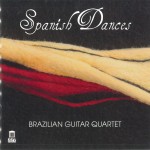 Their latest CD, Spanish Dances (Delos DE 3466), features a wide selection of works by Manuel de Falla, Enrique Granados, Joaquin Turina, Joaquin Rodrigo, Federico Mompou and Isaac Albéniz, all in outstanding arrangements by quartet member Tadeo do Amaral. The group’s use of two six-string guitars and two eight-string guitars gives a richness and depth to their sound that is perfectly suited to the music on hand here. There is a virtual absence of fingerboard noise, technique to burn in quite dazzling performances and a beautiful quality to the recorded sound, which fully captures the nuances, sonorities and colour of the playing.
Their latest CD, Spanish Dances (Delos DE 3466), features a wide selection of works by Manuel de Falla, Enrique Granados, Joaquin Turina, Joaquin Rodrigo, Federico Mompou and Isaac Albéniz, all in outstanding arrangements by quartet member Tadeo do Amaral. The group’s use of two six-string guitars and two eight-string guitars gives a richness and depth to their sound that is perfectly suited to the music on hand here. There is a virtual absence of fingerboard noise, technique to burn in quite dazzling performances and a beautiful quality to the recorded sound, which fully captures the nuances, sonorities and colour of the playing.
The arrangements themselves are quite brilliant, and easily pass the acid test: they sound like original works, and it’s really difficult to imagine them as having been originally written for piano, which all but one were.
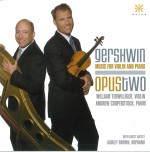 Opus Two, the American duo of violinist William Terwilliger and pianist Andrew Cooperstock, has a new CD of George Gershwin Music for Violin and Piano (Azica ACD-71290). Both players have just the right sound and style for this music, although some of the transcriptions are less successful than others. There are four world premiere recordings here, three of them – the Suite from Girl Crazy, Love Walked In and Nice Work If You Can Get It – by arranger Eric Stern; the fourth is Ayke Agus’ completion (from the original sketches) of Jascha Heifetz’s Excerpts from An American in Paris, Heifetz also being responsible for the Three Preludes for Piano and the Selections from Porgy and Bess. The only original piece for violin and piano is Short Story, which Gershwin wrote with and for the violinist Samuel Dushkin.
Opus Two, the American duo of violinist William Terwilliger and pianist Andrew Cooperstock, has a new CD of George Gershwin Music for Violin and Piano (Azica ACD-71290). Both players have just the right sound and style for this music, although some of the transcriptions are less successful than others. There are four world premiere recordings here, three of them – the Suite from Girl Crazy, Love Walked In and Nice Work If You Can Get It – by arranger Eric Stern; the fourth is Ayke Agus’ completion (from the original sketches) of Jascha Heifetz’s Excerpts from An American in Paris, Heifetz also being responsible for the Three Preludes for Piano and the Selections from Porgy and Bess. The only original piece for violin and piano is Short Story, which Gershwin wrote with and for the violinist Samuel Dushkin.
The arrangements are, for the most part, creative, sympathetic and effective, although the Porgy and Bess transcription (and to a lesser extent An American in Paris) suffers from being a bit too clever at times – perhaps not surprisingly, given that the transcriber was Heifetz; far from enhancing the music, the virtuosity seems to be all that matters, and simply gets in the way.
Soprano Ashley Brown joins the duo for the two songs Love Walked In and Nice Work If You Can Get It, and does a great job; the vocals are light and idiomatic, and the arrangements and violin playing quite lovely.
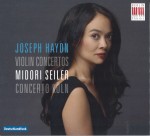 Violinist Midori Seiler is joined by the period specialist ensemble Concerto Köln, which she also directs, on her latest CD of Violin Concertos by Joseph Haydn (Berlin Classics 0300550BC). Four of the numerous violin concertos attributed to Haydn have been confirmed as authentic; one in D major has been lost, and the three concertos here in C Major, A Major and G Major, Hob.VIIa Nos.1, 3 and 4 respectively.
Violinist Midori Seiler is joined by the period specialist ensemble Concerto Köln, which she also directs, on her latest CD of Violin Concertos by Joseph Haydn (Berlin Classics 0300550BC). Four of the numerous violin concertos attributed to Haydn have been confirmed as authentic; one in D major has been lost, and the three concertos here in C Major, A Major and G Major, Hob.VIIa Nos.1, 3 and 4 respectively.
Seiler is noted as one of the leading period performance violinists in Germany, and brings a wealth of insight and experience to these fascinating works. The small size of the accompanying ensemble for this recording – six violins, two violas, one cello and one bass – gives the performances a lightness, clarity and sense of intimacy which is quite delightful, while the excellent range of dynamics provides a spirited vibrancy throughout.
The final track on a lovely CD is the short but charming Romance by Johann Peter Salomon, the German violinist and contemporary of Haydn who achieved greater fame as the London impresario who brought the composer to England on his two London visits.
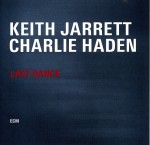 Last Dance
Last Dance










